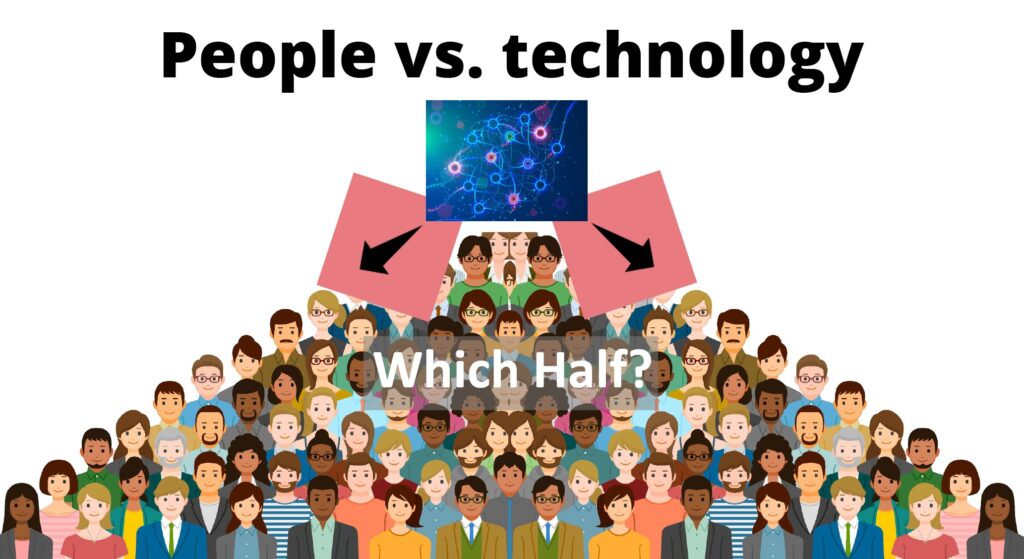
Balancing efficiency and value, and managing people vs. technology, will be key priorities for finance in the future.
By Joseph Neu
Providing foresight on the future of treasury is always a crowd-pleaser with NeuGroup members. During sessions over the last few months, I had the privilege of sharing my current thoughts on the topic and hearing member reactions.
- A shared passion project. Most of these sessions (and more may be coming) have been done in partnership with Jean Furter, now treasurer of Poly, who has also made delivering insight on treasury’s future a passion project. We shared some of Jean’s views in a NeuGroup Insights post last month.
Here are my five key thoughts:
- Scale by balancing maximum efficiency and value creation. One vision of the future I heard holds that treasurers setting goals will need to choose between maximizing efficiency or value. But Jean helped me understand the future will be built on the interplay between efficiency and value, rather than one or the other: The more efficient treasury is, the more bandwidth it has for value-adding activities, including supporting an enterprise as it scales into the future. Indeed, the current focus of inefficient finance teams should be almost entirely on building efficiency, so they are in the best position to maximize added value in the future. The desired end state is treasury distinguishing itself as a value maximizer; that’s the future we want.
- Envision financial plumbing as end-to-end, and embed it. Finance operations in the future will tear down silos creating friction that plagues order-to-cash or procure-to-pay processes and the people who run them. Future-oriented treasuries will help their firms model cash flowing into and out of the enterprise and align finance (not just treasury) operations to them. More importantly, they will take the next step to digitalization and embed the inflow and outflow processing into the business product or service—all with a positive contribution to the user experience and interface at the front end, and efficiency for the digital back office. This links treasury with profit and profit from the business in a way that is also part of the future we want.
- An in-house bank is likely to be a part of your center of excellence (COE) solution set. It may seem counterintuitive to give internal intermediaries a future when businesses are focusing on agility and decentralization and as DeFi threatens intermediated finance. However, there are efficiencies to be gained with centers of excellence; banks are a financial intermediary understood by the masses; the banking function is more likely to undergo virtualization as much as decentralization. So I see a future of in-house banks as virtual constructs that may operate as well on blockchains (and their layers) as they do connected (via APIs) to more traditional payment rails and financial systems. Smart contracts or smart algorithms will do most, if not all of the work in any case. Focusing smart people on smarter work and rethinking centralization is also future forward.
- Orient your technology stack toward the cloud. Similarly, the technology stack for treasury of the future will have to catch up to the latest with the cloud—be it databases, reporting or BI tools, down to code and programing architecture. You glimpse the future already in applications and applets built for AWS, Azure or Google Cloud. Perhaps the only question is will the Web2 (current) cloud win the future or will it be Web3? Whatever apps work best with each other and the data win the future.

- Winning the future will be about correctly managing people vs. technology. Jean loves to provoke preparation for more radical change by predicting steep reductions in the head count needed to operate treasury (and banks). He is probably right that vastly fewer people will be required to run future treasury. To simplify the argument, I like to say that that half as many people will be necessary to scale a treasury to support a mega-cap enterprise than benchmarks for mega-caps today might suggest. Half the people will not be needed at all and the other half will see their roles shifted toward more value-adding activities. And this gets us back to thinking about efficiency vs. value creation. Is the future end state seeking to minimize head count for efficiency’s sake or create a job that maximizes purpose and value for people who would love to work in treasury and are really good at it? A brighter future will come with the latter while also expanding the scope of passionate treasury professionals beyond treasury.


